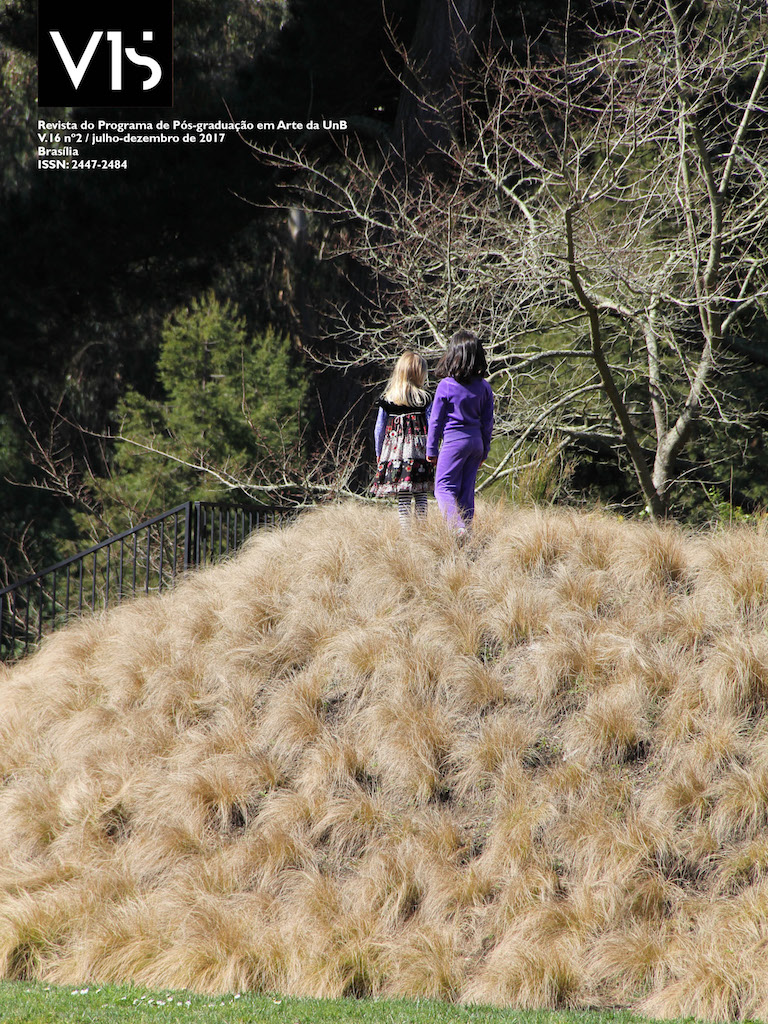Finding my way to a/r/tography
DOI:
https://doi.org/10.26512/vis.v16i2.20649Keywords:
A/r/tography. Arts-based research. Interdisciplinary research.Abstract
The purpose of this article is to better understand the philosophy, theory and principles of a/r/tography and how they can be applied to individual or a community of art-based researchers working in the social sciences and humanities. In 2004, Dr. Rita Irwin coined the term a/r/tography and developed an arts-based research practice based on the philosophical underpinnings of Aristotle’s “three kinds of thought: knowing (theoria), doing (praxis), and making (poesis)” (Irwin, 2004, p. 27). She extends these understandings to educational research (see Dewey, 1934) and expands upon arts-based research (see Eisner, 1979, 1991; Baron & Eisner, 1997) to consider the methodology of a/r/tography for artists, researchers and teachers to enact as a living inquiry. Irwin suggests a/r/tographers’ working in a collective create the opportunity to reexamine, reconfigure and rewrite histories, which were previously misunderstood or invisible. The insights gathered provide multi-faceted perspectives, offering a rich understanding of aesthetic experiences, performativity and poetic expressions linked to intellectual scholarship. The implications of this scholarly work is that art-based researchers will gain a deeper understanding of a/r/tography’s historical development and its potential to broaden social sciences and humanities research through interdisciplinary practices by bringing together communities of researchers from diverse disciplines.
Downloads
References
BAKER, Kimberly, “Is Suburbia Sustainable?” (Unpublished article, The University of British Columbia, p. 1-8, 2011.
BARONE, Tom; EISNER, Elliot. “Arts-based educational research.” In JAEGER, Ricard. Complementary methods for research in education. American Educational Research Association, 2nd Edition, p. 75-116, 1997.
REPORT TO MAYOR AND COUNCIL. Township of Langley: Community Development Division. Subject: Streamside Protection and Enhancement Bylaw No. 4400. March, 6, 2006.
CULLEN, Jim. The American dream: A short history of an idea that shaped a nation. USA: Oxford University Press, 2004.
DEWEY, John. Art as experience. Penguin, 2005.
EISNER, E. W. The promise and perils of alternative forms of data representation. Educational researcher, v. 26, n. 6, p.4-10, 1997
_____. “Recent developments in educational research affecting art education.” Art Education v. 32, n. 4, p.12-15, 1979.
_____. “What the arts taught me about education.” Art Education v. 44, n. 5, p. 10-19, 1991.
HARRIS, Richard; LARKHAM, Peter, Eds. Changing suburbs: foundation, form and function. London: Routledge, 2003.
IRWIN, Rita L. “Becoming A/r/tography.” Studies in Art Education V 54, no. 3, p. 198-215, 2013.
IRWIN, Rita L.; COSSON Alex de, Eds. A/r/tography: Rendering self through arts-based living inquiry. Vancouver, Canada: Pacific Educational Press, 2004.
IRWIN, Rita, SPRINGGAY, Stephanie A/r/tography as Practice-based Research. In IRWIN, R.; SPRINGGAY, S.; LEGGO, C., GOUZOUASIS. Being with A/r/tography, Rotterdam: Sense Publishers, 2008.
LEOPOLD, Aldo. Round River. New York: Oxford University Press, Inc.p..145-146, 1993.
MCDOWELL, Bill. Historical Research: A Guide for Writers of Dissertations, Theses, Articles and Books. London: Routledge, 2015.
NECHYBA, Thomas J., WALSH, Randall P. “Urban sprawl.” The Journal of Economic Perspectives v. 18, n.4, p. 177-200, 2004.
O’DONOGHUE, Dónal. “Are we asking the wrong questions in arts-based research?” Studies in Art Education v. 50, n. 4, p. 352-368, 2009.
______. “That Stayed With Me Until I Was An Adult: Making Visible The Experiences of men Who Teach”. In SPRINGGAY, S., IRWIN, R., LEGGO, C., GOUZOUASIS, P. Being with A/r/tography. S, Rotterdam: Sense Publications, 2008.
PEARSE, Harold. “Praxis in perspective.” In IRWIN, Rita L.; COSSON Alex de, Eds. A/r/tography: Rendering self through arts-based living inquiry. Pacific Vancouver, Canada: Pacific Educational Press, 2004.
“Smart Growth BC.” Accessed February 2006, http:// www.smartgrowth.bc.ca
SPRINGGAY, Stephanie; IRWIN, Rita, LEGGO Carl. Eds. Being with A/r/tography. Rotterdam: Sense Publications, 2008.
WILSON, Sylvia. “Fragments: Life writing in image and text.” In IRWIN, Rita L.; COSSON Alex de. Eds. A/r/tography: Rendering self through arts-based living inquiry. Vancouver, Canada: Pacific Educational Press, 2004.




